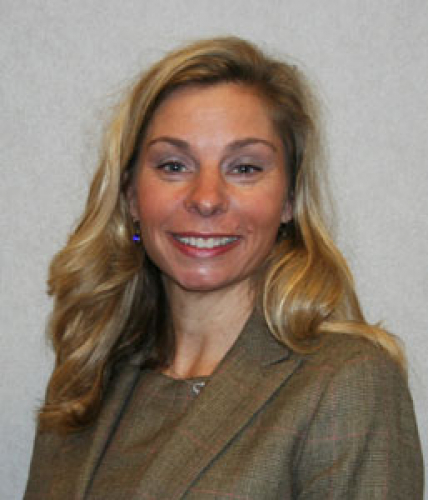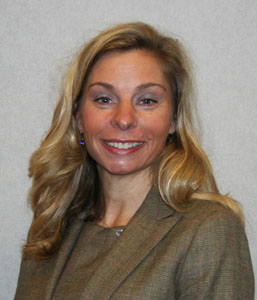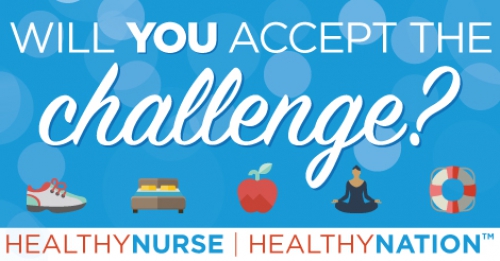Healthy Nurse, Healthy Nation™ Blog - Is It Just Me?
Published
By Andrea Coyle

Mary Smith, charge nurse, was working her second of four 12 hours shifts. When Mary arrived on the unit, she was told by the night shift charge nurse “we had two sick calls and we do not have any nurses available to come in and help.” Sigh…Mary’s first thought was, “How am I going to accomplish all the tasks that are expected of me as the charge nurse and carry a full patient assignment?” Fear of not completing tasks is one source of burnout. Mary also felt frustrated because of inadequate nurse staffing (eye role) AGAIN…which is another source of nurse burnout. Thirty minutes into the shift, Mary’s supervisor walks on the unit and explains to Mary that the patient in room 7 is upset because she had to wait 30 minutes for someone to assist her to the bathroom. Mary’s supervisor stated, “Mary, remember improving patient satisfaction is one of our performance goals. Let’s make sure we answer call bells faster.” After Mary’s interaction with her supervisor, she became tearful and hopeless. Mary remembered how a patient thanked her yesterday for showing compassion and spending an extra 10 minutes listening to her concerns about discharge. Mary wondered how it would feel if her supervisor recognized her and her peers for doing things well instead of focusing on what was not going well. Lack of appreciation and recognition is yet another source of burnout.
Mary’s story probably reminds many of us about our work situations. Assessing our own burnout is important. Below is a burnout awareness activity. Select the option below that best describes your level of burnout. View validation of item here.
(If you rate your level of burnout as 3, 4, or 5, then it is time to take action!)
Be Aware of Your Own Level of Burnout.
1= “I enjoy my work. I have no symptoms of burnout.”
2= “Occasionally I am under stress, and I don’t always have as much energy as I once did, but I don’t feel burned out.”
3= “I am definitely burning out and have one or more symptoms of burnout, such as physical and emotional exhaustion.”
4= “The symptoms of burnout that I’m experiencing won’t go away. I think about frustration at work a lot.”
5= “I feel completely burned out and often wonder if I can go on. I am at the point where I may need some changes or may need to seek some sort of help.”
How to take action:
Andrea Coyle, MHA, MSN, RN, NE-BC, is the Professional Excellence and Magnet Program Director at the Medical University of South Carolina.
Reviewed 2/16/22

Have you joined Healthy Nurse, Healthy Nation (HNHN) yet? Join us today!

Mary Smith, charge nurse, was working her second of four 12 hours shifts. When Mary arrived on the unit, she was told by the night shift charge nurse “we had two sick calls and we do not have any nurses available to come in and help.” Sigh…Mary’s first thought was, “How am I going to accomplish all the tasks that are expected of me as the charge nurse and carry a full patient assignment?” Fear of not completing tasks is one source of burnout. Mary also felt frustrated because of inadequate nurse staffing (eye role) AGAIN…which is another source of nurse burnout. Thirty minutes into the shift, Mary’s supervisor walks on the unit and explains to Mary that the patient in room 7 is upset because she had to wait 30 minutes for someone to assist her to the bathroom. Mary’s supervisor stated, “Mary, remember improving patient satisfaction is one of our performance goals. Let’s make sure we answer call bells faster.” After Mary’s interaction with her supervisor, she became tearful and hopeless. Mary remembered how a patient thanked her yesterday for showing compassion and spending an extra 10 minutes listening to her concerns about discharge. Mary wondered how it would feel if her supervisor recognized her and her peers for doing things well instead of focusing on what was not going well. Lack of appreciation and recognition is yet another source of burnout.
Mary’s story probably reminds many of us about our work situations. Assessing our own burnout is important. Below is a burnout awareness activity. Select the option below that best describes your level of burnout. View validation of item here.
(If you rate your level of burnout as 3, 4, or 5, then it is time to take action!)
Be Aware of Your Own Level of Burnout.
1= “I enjoy my work. I have no symptoms of burnout.”
2= “Occasionally I am under stress, and I don’t always have as much energy as I once did, but I don’t feel burned out.”
3= “I am definitely burning out and have one or more symptoms of burnout, such as physical and emotional exhaustion.”
4= “The symptoms of burnout that I’m experiencing won’t go away. I think about frustration at work a lot.”
5= “I feel completely burned out and often wonder if I can go on. I am at the point where I may need some changes or may need to seek some sort of help.”
How to take action:
- Take a break outdoors (if possible) or off your respective unit for at least 5 minutes per day, this should be in addition to a meal and bathroom breaks. The intent is to disconnect and recharge. If your organization has a walking path or healing garden take in the sights, sounds, and smells; journal your experience.
- Meditate at least 5 minutes per day. Note: there is no right or wrong way to meditate. Download a meditation app, like Calm or Headspace (free for healthcare providers and HNHN participants, see link). For additional information on mindfulness and meditation tips, check out this blog by nurse practitioner and certified mindfulness coach, Julia Sarazine.
- Gratitude- thank at least three people per day. Intrinsically the act of complimenting another person can increase a sense of connection and relationship. Log your “thank you’s!”
- Practice self-care. A daily skin care routine can be an important step in self-care, especially when spending long hours in PPE and a regimen can be as easy as cleansing, moisturizing and protecting. For simple steps to care for your skin every day, reference this article from dermatologist Dr. Sejal Shah.
- If your organization has an Employee Assistance Program, reach out and speak with someone. It’s part of taking charge of your well-being.
- Check out Healthy Nurse, Healthy Nation’s blog Mental Health Help for Nurses and ANA’s webpages on Nurse Suicide Prevention and Resilience.
Andrea Coyle, MHA, MSN, RN, NE-BC, is the Professional Excellence and Magnet Program Director at the Medical University of South Carolina.
Reviewed 2/16/22

Have you joined Healthy Nurse, Healthy Nation (HNHN) yet? Join us today!
Blog Quality of Life
11/05/2020 10:57am CST



Post a Comment or Question